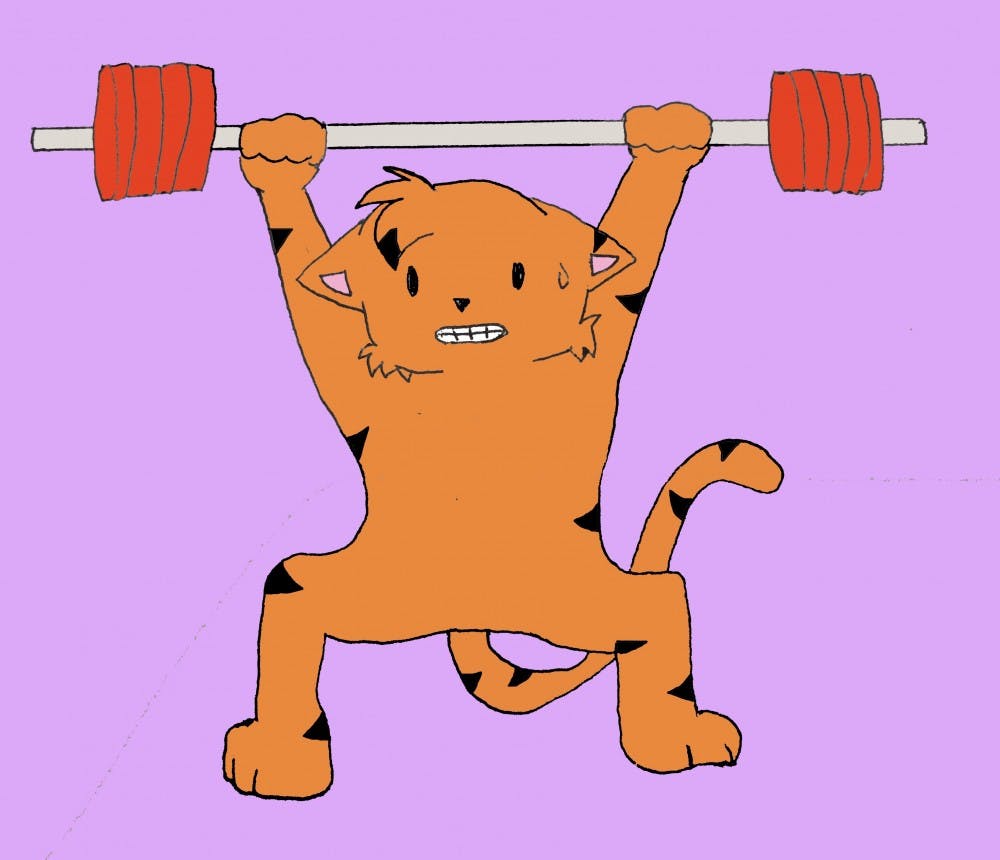For me, walking into the weight room of Stephen’s Fitness Center is like being an English major in an advanced particle physics class. No matter how many times I walk down those steps, pick up my 10-pound weights, and awkwardly squeeze myself as unobtrusively as possible into a corner, my lack of a Y chromosome makes me feel out of place. It isn’t going to stop me from going down there, but it does make me feel far more self-conscious than I have ever felt anywhere else on campus.
I ran on the same treadmill every day freshman year: the first one on the second row of the cardio section. I lost 15 pounds in two months, arriving home at Thanksgiving to a mother who tried to force-feed me pumpkin pie and candied yams. It was the thinnest I had ever been — and I thought, the fittest. Then I went to a high-intensity cardio cycle class and almost fainted on the bike. Sure, I was thin, but the long, low-intensity runs I did on the treadmill every day had weakened every other part of my body.
Aside from the infrequent weight room sessions I got as a varsity athlete in high school, I had absolutely no idea how my body worked — and how exercise impacted the way I felt, looked, and thought about myself. When I got to college, I promised myself I wouldn’t gain the Freshman 15, so I counted calories and ran six miles on the treadmill every day. But by the end of the year, my knees started hurting, my ankles would swell, and I quickly fatigued on any run that went above my normal 7.6 mile-per-hour pace. I ran for the calorie deficit; I didn’t run to feel good.
In a 2016 study published by the National Center for Biotechnology Information (NCBI), women said they worked out for “weight loss and toning” reasons. Alternatively, the NCBI cited two earlier findings that men were more likely to exercise for “social and competitive reasons.” However, societal pressure from both male and female groups to “look a certain way” — be that more muscular and “built” for men, or flat-bellied and toned for women — are equally driving factors for body image. The NCBI also cited a report that showed increased exercise for men was directly correlated with higher levels of self-esteem, whereas the inverse was true of young women. This might have something to do with the fact that, as the study suggests, women are taught to exercise to lose something, rather than to gain something, while the opposite is true of men. Men build and gain, women shrink and lose. This isn’t just my feeling intimidated as I walk down the steps to the weight room — it’s a metaphor for the heavy weight of gender performance and expectation in the world.
Even though the metabolic advantage of strength workouts and the long-term calorie-burning benefit of building muscle are well proven and frequently studied, I’m usually one of the few women in the “dungeon.” Women are taught to burn as many calories as possible in one cardio session, but few women understand the way the body and our muscles work. In all honesty, women usually aren’t taught how to do strength-building workouts, especially if they weren’t a part of a high school, collegiate, or club athletics program. We don’t know how to load up a bar or use a spotter for heavy weight training. We don’t know that some workouts are just naturally harder because women are more inclined to have a tilted pelvis, causing lumbar lordosis. We don’t know that women’s low testosterone levels mean muscles are harder to build. We don’t know that women generally develop more slow-twitch muscles (from all that cardio!), which helps with endurance during a hard training session. In 2009, “Women’s Health” cited The Journal of Strength and Conditioning Research, which said that strength training helps burn “an average of 100 more calories in the 24 hours afterward than they did when they hadn’t lifted weights.” I definitely did not know that.
Only after much research directed toward understanding how and why my female body works the way it does have I been able to see what it needs — a healthy mix of cardio and strength. And I walk down those steps almost every day now. I do pull-ups (definitely with a little help) and push-ups and even squat occasionally (I’m only up to 95 pounds, but I’m working on it!). My body looks different than it did freshman year, but I feel strong. Yes, my shoulders are broader and my thighs are thicker, but my knees don’t hurt and I can crush a spin class at the top of the leaderboard without feeling like I’m going to faint. I still feel a bit weird in the weight room, but my health matters more to me than my gender performance.
All of this is not to say that women should be body builders, or that men should run 5ks every day. All I’m trying to say is that this whole middle-school-gender-segregation-at-the-gym thing really just shows how little we know about what our bodies — our human bodies — need.
Currie Engel is a senior English concentrator from Charlotte, N.C. She can be reached at mcengel@princeton.edu.








